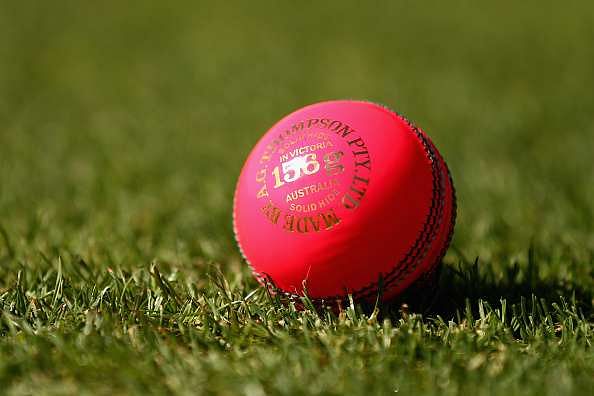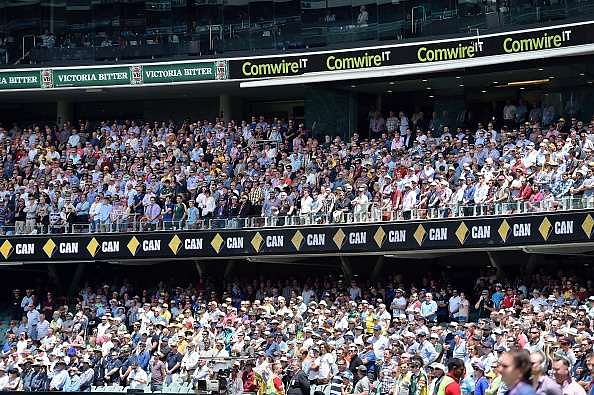
Day-Night Test Cricket – Is it a sustainable product?

27th November 2015 was a historic day in the annals of world cricket. When Mitchell Starc ran in to deliver the first ball ever to be bowled with a pink ball in international cricket, I had goose bumps all over me.
The prospect of a test match starting post lunch, the previously unseen image of a pink ball and the exciting proposition of test match cricket under a dark skyline presented me with a terrific package, which I hadn’t encountered earlier. I eagerly awaited the start of the game that would script a new tale in cricket history.
New Zealand collapsed as a batting unit and so did my fortified hope of experiencing a spectacle. As the day progressed, the pink ball seemed to have lost its ability to entice and the night sky failed in its attempt to help me distinguish between a test match and a limited overs game.
The law of diminishing returns seemed to border along the eccentric as my excitement waned with each over bowled. The picture that was imprinted in my mind was diluted probably because I didn’t experience the thrill my heart desired. The confluence of the setting sun and the flood lights presented a beautiful sight, but that was the only gold that glittered that evening.
Given that I anticipated a cricketing phenomenon, I was surprised that I didn’t look forward to the second day of the test. Did I raise the bar too high in terms of expectations from a test match? Was I naïve in believing that a change in over-head conditions would add a romantic flavour to test match cricket?
Overhyped?

Personally as a cricket fan, the excitement that accompanied the tremendous buzz in the build up to pink ball cricket, quickly died down, leading to an internal speculation on the feasibility and acceptance of day-night test cricket as a product.
Disappointed at a personal level, I wondered about the global reactions to the same. The two captains who were involved in the game, Brendon McCullum and Steve Smith whole-heartedly endorsed the idea of pink being associated to cricket.
The spectators at the Adelaide Oval too overwhelmingly ratified the concept. Generally, modern day cricketers concurred with the new concept (probably due to the fact that late-nights and late-mornings are entrenched into the psyche of today’s generation). Unlike the current generation of cricketers, few retired cricketers and pundits of the game generally seemed averse to the idea of diluting tradition and history.
27th November 2015 helped me realize that I belong to the latter group (Strictly in terms of thought, not in terms of age).
Coming to the moot point of this article – is day night cricket a sustainable cricketing product? There are different stakeholders that offer different perspectives on the issue. Broadcasters would love to explore the idea, given that local television viewership progressively increases as day turns to night.
Consequently, advertisers and sponsors would want to maximize their marketing potential that can be leveraged through a populous audience. With technology becoming an increasingly influential factor in umpire decision making, the pink ball and day-night test cricket provide a plethora of opportunities for technology providers to explore.
The various national cricket boards too could lap up the inviting proposition of big crowds at stadiums. The media wouldn’t seem too indifferent to the concept, as it would give them another topic to debate on. However, what about the most important stakeholder – the cricket fan, who is central to the progress and growth of the game?
Is the cricket fan ready to accept this new product with an open mind?

The ICC periodically implements changes to the rules that govern the way the game is played in order to keep alive the interest of the cricket fan. Apparently, day-night test cricket was conceptualised as a by-product of the above statement.
But is the cricket fan ready to accept this new product with an open mind? Though the spectators at the Adelaide Oval were unified in their acceptance of the same, can the same be said about the fans who were in touch with that game via television and Internet? It isn’t prudent to generalize spectators and fans under one umbrella.
As was my experience in front of the television, so might have been the case with other television viewers as well. It has to be realistically understood that a spectator in the stadium may have witnessed and experienced the substantive desired outcome of the product, but the television and internet followers had only an interface to the game that prevented them from encountering the vagaries of the day-night test.
It can be argued that at a generic level, internet and television followers have always had an interface to the game, but traditional cricket did not have any additional hype around it in the form of either a pink ball or a night sky.
To conclude, it is important to measure the success of day-night test cricket as a substantial product based on numerous factors, predominantly from the perspective of a cricket fan. My personal experience apart, one game is too small a sample to draw conclusive results from.
If accepted by all cricket boards across the world, the response from the respective fans will be the critical factor in deciding the viability of the product. White ball cricket too evolved in a similar fashion and has eventually been endorsed by the fan.
But would a fan be willing to devote five successive evenings to test match cricket, is a question that cricket administrators will have to ask of themselves. Traditional, pure and untouched – that is how I would prefer test cricket personally.